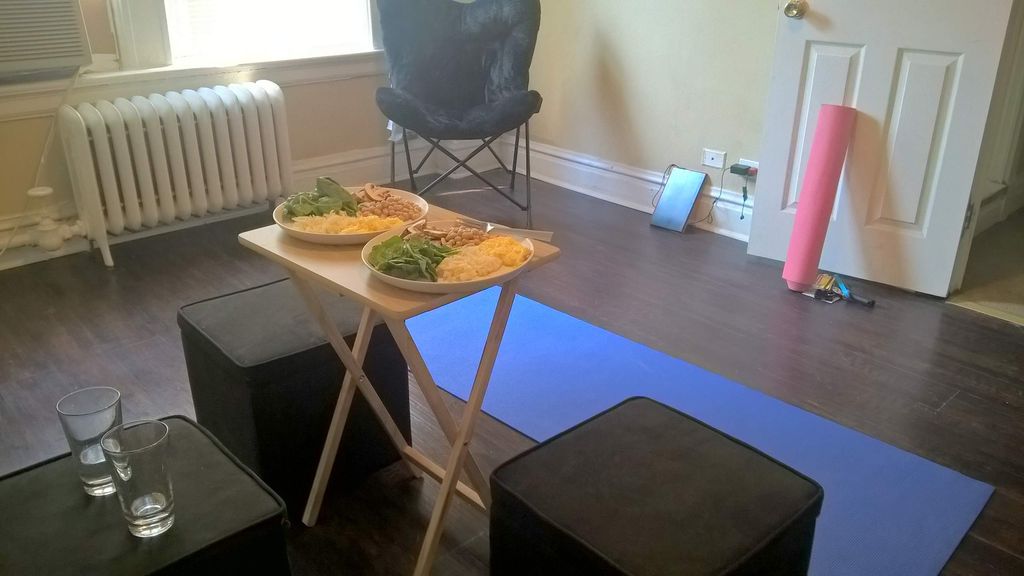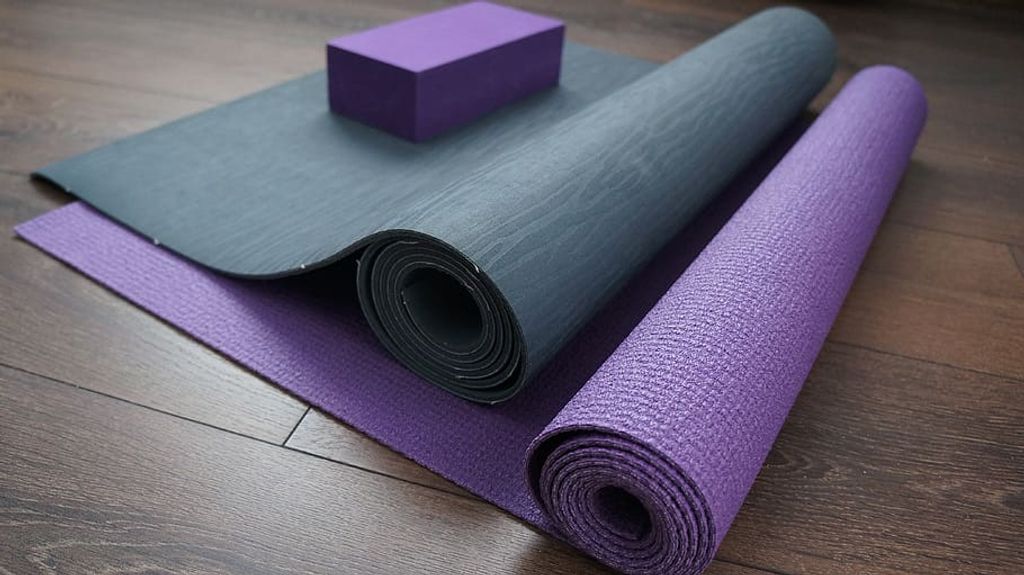
How to Properly Clean and Maintain Your Yoga Mat
Properly cleaning and maintaining your yoga mat is essential to ensure its longevity and to keep it hygienic for your practice. By following these simple steps, you can keep your yoga mat clean, fresh, and in good condition for years to come.
Key Takeaways
- Choose a yoga mat made of durable and easy-to-clean material.
- Regularly wipe down your mat with a mild cleaning solution.
- Deep clean your mat at least once a month.
- Avoid exposing your mat to direct sunlight to prevent damage.
- Store your mat in a cool and dry place to prevent mold and mildew.
Choosing the Right Yoga Mat
Consider the Material
When choosing a yoga mat, it is important to consider the material. The material of the mat can affect its durability, comfort, and grip. There are different types of materials used for yoga mats, each with its own pros and cons.
One popular material is PVC (polyvinyl chloride), which provides excellent grip and cushioning. However, it is not environmentally friendly and may contain harmful chemicals. Another option is natural rubber, which is eco-friendly and provides good grip. However, it may have a strong odor initially.
To help you make an informed decision, here is a table comparing the different materials used for yoga mats:
| Material | Pros | Cons |
|---|---|---|
| PVC | Excellent grip and cushioning | Not eco-friendly, may contain harmful chemicals |
| Natural Rubber | Eco-friendly, good grip | Strong odor initially |
Remember to choose a material that suits your needs and preferences, keeping in mind factors such as grip, comfort, and environmental impact.
Check for Thickness and Cushioning
When choosing a yoga mat, it is important to consider the thickness and cushioning. The standard mm thickness for yoga mats typically ranges between 4mm and 6mm. This range strikes a balance, offering enough padding to cushion the joints during yoga poses while still providing stability and support. A thicker mat may provide more cushioning, which can be beneficial for those with sensitive joints or who prefer a softer surface. On the other hand, a thinner mat may be preferred by those who prioritize stability and a closer connection to the ground. Ultimately, the choice of thickness and cushioning depends on personal preference and individual needs.
Look for Grip and Traction
When choosing a yoga mat, it's important to consider the grip and traction it provides. A mat with good grip will help prevent slipping and sliding during your yoga practice, allowing you to maintain stability and focus. Look for a mat that has a textured surface or a sticky material that enhances grip. This will ensure that you can confidently hold your poses without worrying about your hands or feet slipping. Additionally, a mat with good traction will provide a solid foundation for your practice, allowing you to move through poses with ease and stability.
Cleaning Your Yoga Mat
Regularly Wipe Down Your Mat
To maintain the cleanliness of your yoga mat, it is important to regularly wipe it down. This will help remove any sweat, dirt, or bacteria that may have accumulated during your practice. Gently wipe the mat with a clean cloth dampened with a mild soap solution or a yoga mat cleaner. Avoid using harsh chemicals or abrasive materials as they can damage the mat.
For a more thorough cleaning, you can also use a vinegar and water solution. Mix equal parts of white vinegar and water in a spray bottle and spray it onto the mat. Let it sit for a few minutes before wiping it off with a clean cloth. This natural solution helps to disinfect the mat and remove any odors.
To ensure the longevity of your mat, it is recommended to wipe it down after each use. This will prevent the buildup of dirt and sweat, keeping your mat fresh and hygienic for your next practice.
Remember to always check the care instructions provided by the manufacturer for specific cleaning recommendations.
Deep Clean Your Mat
When it comes to deep cleaning your yoga mat, there are a few options you can consider. One method is to create a solution using equal parts water and vinegar. This natural cleaning solution is effective in removing dirt, sweat, and bacteria from your mat. Another option is to use a mild soap or detergent mixed with water. Make sure to thoroughly rinse your mat after cleaning to remove any residue. Additionally, you can also use a yoga mat cleaner specifically designed for deep cleaning. Follow the instructions provided by the manufacturer for best results.
Use Natural Cleaning Solutions
When it comes to cleaning your yoga mat, using natural cleaning solutions is a great option. Not only are they effective in removing dirt and bacteria, but they are also safe for both you and the environment. Here are a few natural cleaning solutions you can use:
- Vinegar and Water Solution: Mix equal parts of white vinegar and water in a spray bottle. Spray the solution onto your mat and wipe it down with a clean cloth.
- Lemon Juice and Water Solution: Squeeze the juice of one lemon into a bowl of water. Dip a cloth into the solution and gently scrub your mat.
- Baking Soda and Water Paste: Mix baking soda and water to create a paste. Apply the paste to any stains on your mat and let it sit for a few minutes before wiping it off.
Remember to always test any cleaning solution on a small area of your mat first to ensure it doesn't cause any damage. Using natural cleaning solutions will not only keep your mat clean but also extend its lifespan.
Drying and Storing Your Yoga Mat
Air Dry Your Mat
After cleaning your yoga mat, it's important to properly dry it to prevent the growth of bacteria and mold. Air drying is the best method for drying your mat as it allows for natural evaporation. Avoid using direct sunlight to dry your mat as it can cause the material to deteriorate over time. Instead, find a well-ventilated area and lay your mat flat to dry. This will ensure that your mat stays in good condition for longer.
Avoid Direct Sunlight
Direct sunlight can cause damage to your yoga mat over time. Prolonged exposure to the sun's rays can lead to fading, discoloration, and deterioration of the mat's material. To protect your mat from the harmful effects of sunlight, it is recommended to avoid leaving it exposed to direct sunlight for extended periods. Instead, find a shaded area or store your mat indoors when not in use.
Properly Store Your Mat
After each use, it is important to properly store your yoga mat to maintain its longevity. Here are some tips to help you store your mat correctly:
- Roll up your mat tightly to prevent it from getting damaged.
- Avoid storing your mat in direct sunlight as it can cause the material to deteriorate.
- Find a cool and dry place to store your mat to prevent moisture buildup and the growth of mold or mildew.
Remember, taking care of your yoga mat will ensure that it lasts for a long time and remains in good condition.
Maintaining the Longevity of Your Yoga Mat
Avoid Excessive Wear and Tear
To ensure the longevity of your yoga mat, it is important to avoid excessive wear and tear. This means taking proper care of your mat and using it in the right way. Here are some tips to help you keep your mat in good condition:
- Clean your mat regularly to remove dirt and sweat buildup.
- Avoid placing your mat on rough or abrasive surfaces that can cause damage.
- When practicing, avoid dragging or sliding your feet on the mat, as this can lead to tears.
- Store your mat in a cool and dry place to prevent it from deteriorating.
Remember, taking care of your yoga mat will not only extend its lifespan but also ensure a safe and enjoyable practice.
Keep Your Mat Away from Harsh Chemicals
To maintain the longevity of your yoga mat, it is important to keep it away from harsh chemicals. Harsh chemicals can deteriorate the material of the mat and affect its performance. Avoid using cleaning solutions that contain strong chemicals, as they can cause discoloration and damage to the mat. Instead, opt for natural cleaning solutions that are gentle on the mat and safe for your health. Additionally, be cautious when using other products near your mat, such as lotions or oils, as they can also leave residue and affect the grip of the mat.
Store Your Mat in a Cool and Dry Place
Properly storing your yoga mat is crucial for maintaining its longevity. When not in use, it is important to store your mat in a cool and dry place. This helps prevent the growth of mold and mildew, which can damage the mat. Avoid storing your mat in areas with high humidity or direct sunlight, as these conditions can cause the mat to deteriorate. Additionally, make sure to roll up your mat properly to avoid creases and damage. Consider using a yoga mat strap or bag to keep your mat neatly stored and protected.
Maintaining the longevity of your yoga mat is essential for a successful and enjoyable yoga practice. At Yune Yoga, we understand the importance of taking care of your yoga mat to ensure its durability and performance. Our wide range of yoga mats and fitness and health accessories are designed to provide you with the best support and comfort during your yoga sessions. Whether you are a beginner or an experienced yogi, our high-quality products are perfect for enhancing your practice. Visit our website today to explore our collection and find the perfect yoga mat and accessories for your needs. Join the #YUNEYOGA community and take your yoga practice to the next level!
Conclusion
In conclusion, proper cleaning and maintenance of your yoga mat is essential for both hygiene and longevity. By following the steps outlined in this article, you can ensure that your mat remains clean, fresh, and in good condition for your yoga practice. Remember to regularly clean your mat with a gentle cleanser and avoid using harsh chemicals that can damage the material. Additionally, air drying your mat after each use and storing it in a dry and well-ventilated area will help prevent the growth of bacteria and prolong its lifespan. Taking care of your yoga mat not only benefits your health but also enhances your overall yoga experience. So, make it a habit to give your mat the care it deserves!
Frequently Asked Questions
How often should I clean my yoga mat?
It is recommended to clean your yoga mat after every use or at least once a week, depending on how frequently you use it.
Can I use soap to clean my yoga mat?
Yes, you can use a mild soap or a yoga mat cleaner to clean your mat. Make sure to rinse it thoroughly to remove any soap residue.
Can I put my yoga mat in the washing machine?
It depends on the type of yoga mat. Some mats are machine washable, while others may get damaged in the washing machine. Check the manufacturer's instructions before washing your mat.
How do I remove stubborn stains from my yoga mat?
For stubborn stains, you can try using a mixture of water and vinegar or a baking soda paste. Gently scrub the stain and rinse thoroughly.
How should I store my yoga mat when not in use?
It is best to roll up your yoga mat and store it in a cool and dry place. Avoid folding it as it may cause creases and damage the mat.
How long does a yoga mat typically last?
The lifespan of a yoga mat depends on its quality and usage. With proper care and maintenance, a good quality mat can last for several years.


